Vine frontier
Mainland winemakers are being drawn to Tasmania in a quest that is as much about the romance of place as it is about the weather.
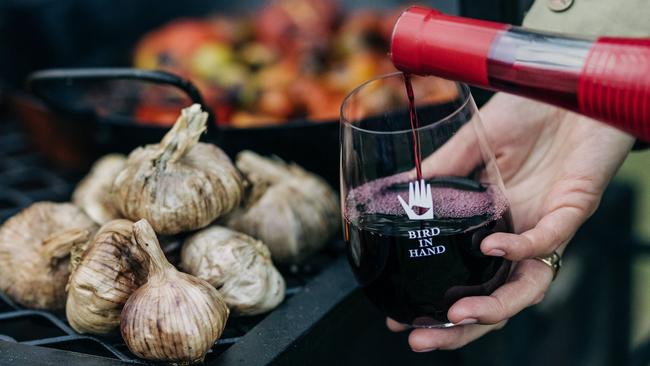
During the dark days of hard lockdown, South Australian winemaker Andrew Nugent found himself searching the internet for land in cool, clean and relatively virus-free Tasmania. Unlike many mainlanders seeking opportunities south of the 40th parallel, the owner of Bird in Hand winery was seeking something particular. One weekend he found it: a 180ha strip on Tasmania’s sunny east coast perfect for the key sparkling wine varieties of chardonnay and pinot noir.
The purchase was “sight unseen”, the Adelaide Hills vigneron confesses. Six months later he and his team are celebrating by the banks of a sweet tree-lined creek running through the company’s new Tasmanian acquisition, with a menu of charcoal-grilled lobster and a variety of Bird in Hand wines.
“I really felt something when I saw it, as in fact I did when we bought the Bird in Hand site 23 years ago at Woodside in the Adelaide Hills,” Nugent explains. “Plenty of Tasmanian sites are well suited to viticulture, but this site has some magic to it. There are the mountains to the west behind us, the creek, the lagoons and the east coast beaches, and the heavy dolerite soils so close to the coast.
“For winemakers, quality fruit is paramount. Tassie ticks that box more than any of the other mainland states, particularly in sparkling wine. A lot of it’s about feel, and I’ve fallen in love with the east coast in particular and Tasmania as a whole. It’s a remarkable place.”
Nugent stresses the intuitive and sensory inspiration behind his new Tasmanian acquisition – the romance of place – but there’s also a hard-nosed business calculation behind it. “Winemaking regions on the mainland are getting hotter and hotter,” he says with a grim expression. When he first started planting vines in the Adelaide Hills, as he recalls, old hands would shake their heads and warn him it was too cold for winemaking. The wines he makes at Bird in Hand are technically the products of a “cool climate”, but the climatic chill is lessening. “We used to pick our grapes in March or April,” he says. “Now we pick February and March.”
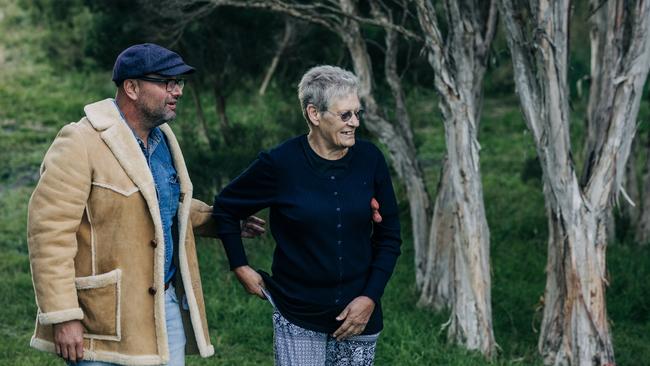
By focusing his Tasmanian venture on chardonnay, pinot noir and pinot meunier (the one white and two black grape varieties used by champagne makers in the classic blend), Nugent is future-proofing his sparkling wine operation. “Tasmanian sparkling wine is superior to anywhere on the mainland,” he says. He will also plant pinot gris – the new sauvignon blanc – as well as riesling and shiraz. He refers to the latter by its French name, syrah, signalling his aspiration to make a lighter northern-Rhone style red: “more white pepper and spice, not so high in alcohol and jammy”.
At the same time, he thinks Australian winemakers should ditch their default benchmarking against European styles. “We’ve got some of the oldest and best soils in the world and great agricultural skill.”
There’s another future-looking feature to Nugent’s calculations: value. Tasmanian grapes are worth considerably more on average than mainland fruit. Tasmania produces 1 per cent of the nation’s wine by volume, and 4 per cent by value. Only 7 per cent of Australian wines are sold above $15 a bottle, but not one Tasmanian brand is sold below that price. And in an industry with a somewhat chequered international reputation for industrial-scale winemaking, Tasmania has established itself as an outpost of nuanced and small-scale cool-climate wine: a vinous sweet spot.
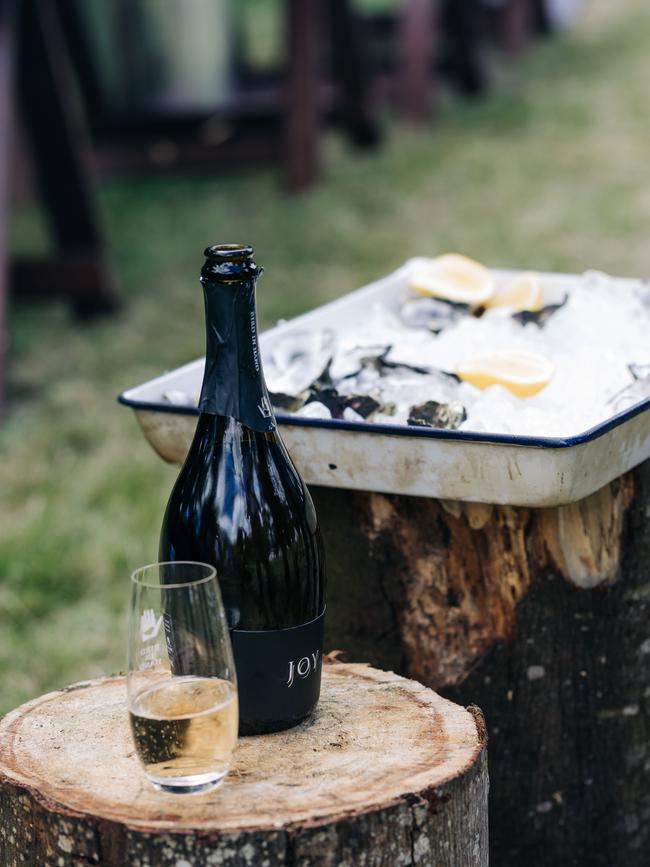
The island’s reputation in global wine circles was undergirded late last year when Tasmania’s House of Arras reeled in Decanter magazine’s top sparkling award, shortly after a 2018 Tasmanian chardonnay by Tolpuddle was awarded champion white at the International Wine Challenge. Michael Hill Smith, joint manager of Tolpuddle in the Coal River Valley north of Hobart, is quick to deflect attention from viticultural wizardry to the blessings of a cool – if not genuinely cold – climate. “Tasmania is cold but can also be quite dry, producing wines that couple a bracing line of acid with amazing fruit and flavour intensity,” he says. “The best wines are both distinctive and exhilarating.”
Tasmanian-born Ricky Evans, owner and winemaker at Two Tonne Tasmania in the Tamar valley outside Launceston, points out that while the Burgundy varieties of chardonnay and pinot noir do well in the Adelaide Hills, the region is only cool in relation to the nearby Barossa Valley. “Tasmania is much further south and we don’t get the heat extremities,” he says. “We’re a small island and have a genuine maritime climate. It allows the fruit to ripen slowly on the vine, and as a result we get very good flavour and freshness.”
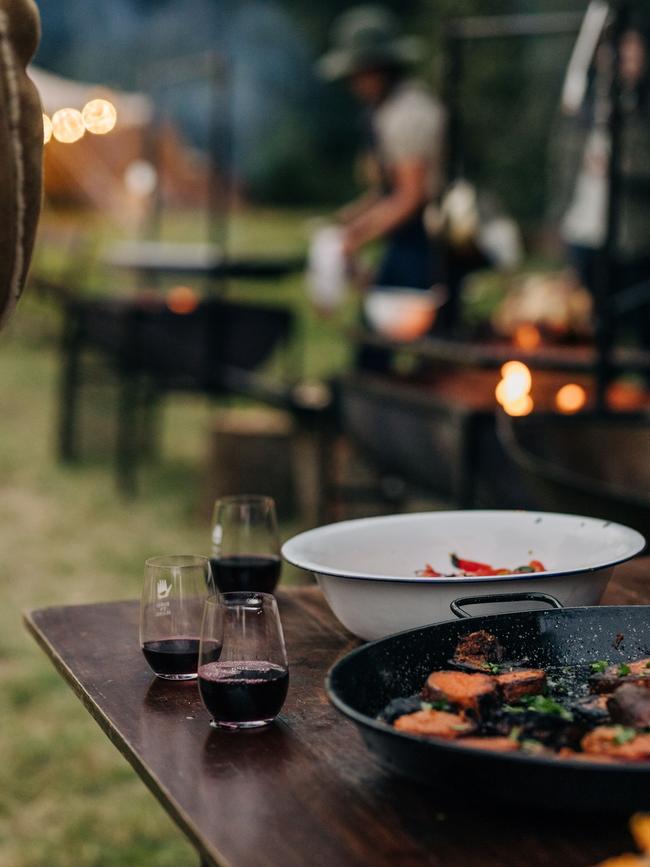
Nick Glaetzer, an award-winning producer of mainly pinot noir and riesling, and son of the renowned Barossa vigneron Colin Glaetzer, moved to Tasmania in 2005 fired with a passion for the cool-climate wines he admired in Europe, particularly burgundy. A 2010 Jimmy Watson winner – for a cool-climate shiraz, Mon Père, made in honour of his father – he was recently named one of the wine world’s 50 next-gen stars at a ceremony on London.
He planned to return to the old world – probably Burgundy – after obtaining his winemaking degree but his plans were upended by a Tasmanian pinot at a blind tasting in 2004. It was made by Andrew Hood of Wellington Wines and was “so spectacular most of us mistook it for a really good premier cru or a grand cru”. Glaetzer moved to Tasmania and started working with Hood in 2006, before setting up his own brand specialising in cool-climate riesling, chardonnay, pinot noir and shiraz. Many Australian rieslings are made with added tartaric acid but in Tasmania Glaetzer can make a wine with “pure natural acidity” reminiscent of Germany’s finest, while the long, slow ripening season allows him to produce a balanced wine with soft ripe tannins.

Sheralee Davies, chief executive officer of Wine Tasmania, observes that in many supposedly cool wine regions on the mainland temperature is tempered by altitude, but in Tasmania the greatest influence is climate. “We are cooled by latitude and the temperature is moderated by oceans and rivers,” she says. “This means our grapes slowly and steadily ripen on the vine, and develop intense, vibrant characteristics and a mouthwatering structure. Our grapes hang on the vines longer as a result, and we harvest from February through to April and May. This brings greater risks as they are exposed to mother nature that much longer than many other wine regions, but it pays off in the great quality of the wine.
“Tasmania also experiences significant diversity of conditions from season to season, which can be tasted through the wines. Our talented growers need to be alert and agile to manage these seasonal variabilities and get the best results each year.”
When talented young Swiss-born winemaker Matthias Utzinger established his eponymous label in 2017 he was struck by the similarities with the wine-growing regions of his homeland. He and his Tasmanian-born wife Lauren – the two met while travelling solo in Iran – have settled on a sloping 18ha Tamar Valley vineyard where they have plantings of pinot noir, chardonnay, sauvignon blanc – and a little syrah.
Utzinger, too, stresses the capacity of long ripening periods to produce balanced and aromatic wines. “Switzerland, Alsace, New Zealand, Germany and some cooler-climate regions in the United States all prove that point and for me are the ones whose wine styles influences me the most,” he says.

New Zealand-born and University of Canterbury-educated Samantha Connew, owner and winemaker at Stargazer, in the Coal River Valley, notes that both Tasmania and New Zealand’s South Island share the influence of a crisp maritime climate. Connew, who has made wine in the NSW Hunter Valley and in McLaren Vale, South Australia, recalls that when she relocated to Tasmania in 2013 it was “like coming home – from both a lifestyle point of view and a grape-growing point of view. Tassie for me is a perfect combination of Australia and New Zealand.” She suspects that a unique quality of Tasmanian geology – an underlay of Jurassic dolerite rock – explains the high calcium levels in the Coal River Valley. “This contributes to grapes with thicker skins and a longer ripening period – like New Zealand.”
Tasmania may not produce typically big, bold Australian reds. But in a warming world, it increasingly seems that the cooler, the climate the brighter the future.
That’s not to say the table wines of Tasmania, particularly the finicky pinot noir, have reached anything like their full potential. It’s a point underlined by Andrew Nugent, who observes that Tassie pinot has plenty of global competition, even among New World winemakers. South Africa, North America, Chile and, of course, New Zealand are making top-flight pinot noir. Even in Australia, the island state’s pinot is arguably outpointed by competitors from the cooler Victorian regions of Gippsland, Geelong and the Mornington Peninsula.
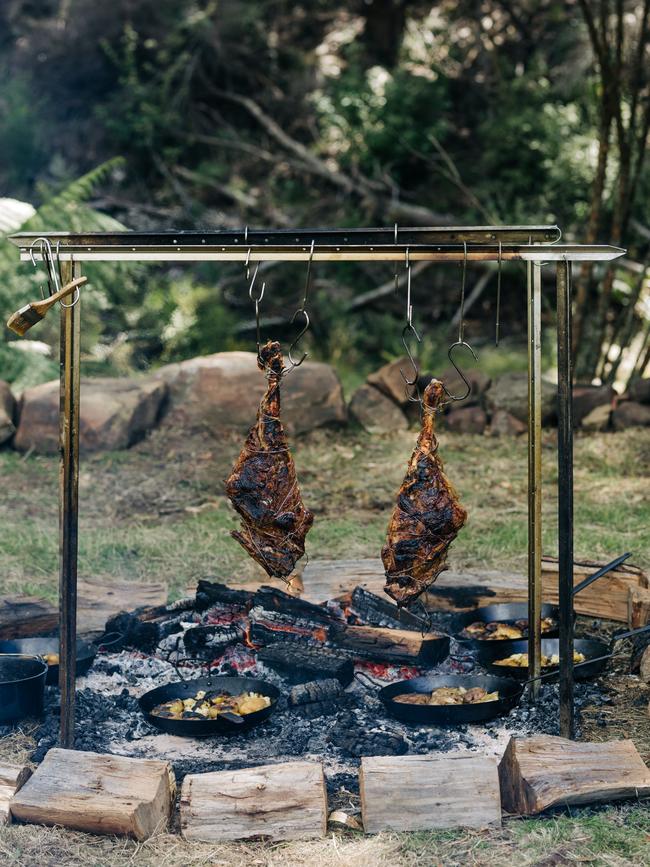
The arrival of Bird in Hand, a big operation with the capacity to produce internationally recognised wines, will help Tasmania’s cool-climate wine quest – even if the grape juice, initially at least, is shipped back to the Adelaide Hills mothership for fermentation, bottling and ageing and, in the case of sparkling wine, disgorging.
The company aims to contribute to the future of an effervescent industry not only by producing quality Tassie wine. In conversation Nugent refers often to the “energy” of his new vineyard site, and to the energy he hopes to create with “landscape art” inspired by the work of Italian Fernando Caruncho, as well as conservation measures to preserve sensitive Tasmanian native flora and fauna. He sees wine as one of the great joys of life, best appreciated with music, natural beauty, architecture, art and good conversation. “We’ve been looking for a magical site,” he says. “And now that we’ve found it we’re looking to create a bit of magic.”
place as it is about the vicissitudes of weather

To join the conversation, please log in. Don't have an account? Register
Join the conversation, you are commenting as Logout